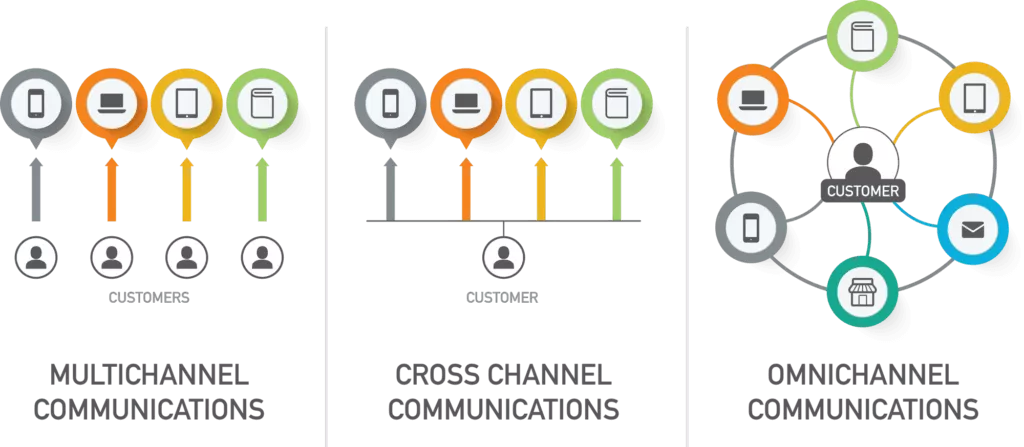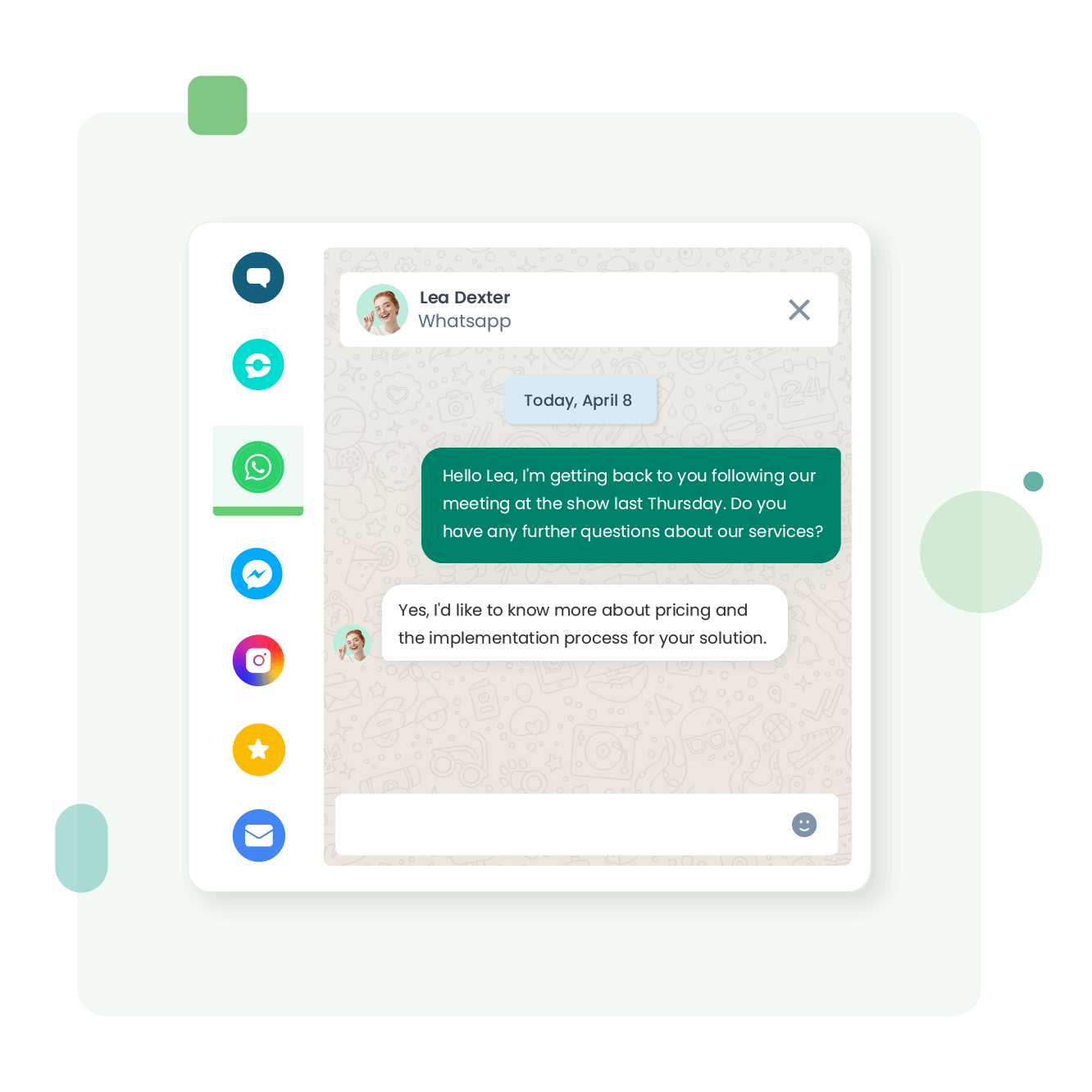In today’s dynamic digital landscape, customers are no longer passive recipients of information. They’re empowered researchers, comparison-shopping wizards, and social media-savvy brand advocates (or critics) – all rolled into one. This hyper-connected consumer journey demands a communication strategy that transcends the limitations of the traditional multichannel approach. Enter omnichannel communication – the key to unlocking deeper customer connections, fostering brand loyalty, and driving business growth in the age of the empowered customer.
Overview about Omnichannel Communication:
Omnichannel communication is a method of connecting with customers across multiple channels, such as a website, mobile app, social media, SMS, or phone call, to create a consistent customer experience. It differs from multichannel communication, which uses several disconnected channels. The key is that the experience feels seamless and consistent, no matter which channel the customer uses.
Multichannel vs. Omnichannel: Understanding the Crucial Difference
Many businesses operate under a multichannel communication model, employing a variety of platforms – email, social media, SMS, web chat – to reach their audience. While this approach offers wider reach compared to a single channel, it often falls short in creating a cohesive customer experience. Each channel functions independently, with potentially inconsistent messaging and a fragmented view of customer interactions.
Open source unified communication (UC) platforms offer an alternative approach, enabling businesses to integrate various communication channels under a single system. However, even with UC platforms, achieving a truly seamless omnichannel experience requires a strategic shift in focus.
Omnichannel communication, on the other hand, goes beyond mere presence across multiple channels. It prioritizes a seamless, integrated experience where every touchpoint – website, social media post, email, in-store interaction – feels like part of a unified conversation. The customer is at the center of this strategy, with their preferences and journey dictating the communication flow.

The Features of Omnichannel Communication:
An effective omnichannel communication strategy leverages a combination of traditional and emerging technologies to create a symphony of touchpoints that resonate with customers. Here are some key features that make omnichannel communication so powerful:
WhatsApp Integration: With its widespread popularity and billion-strong user base, WhatsApp has become a vital channel for business communication. Integrating WhatsApp into the omnichannel strategy enables companies to engage with customers in real-time, facilitate conversational commerce, and provide instant support. From order updates to product inquiries and customer service, WhatsApp integration adds a layer of convenience and accessibility to the customer experience.

Social Media: Platforms such as Facebook, Twitter, Instagram, and LinkedIn serve as invaluable channels for customer engagement and brand promotion. Incorporating social media into the omnichannel mix allows businesses to interact with customers on their preferred platforms, share relevant content, address queries, and gather feedback. By leveraging social listening tools and engaging in proactive community management, companies can build a loyal following and enhance brand visibility.
Live Chat: As consumers seek instant gratification and personalized assistance, live chat emerges as a cornerstone of the omnichannel communication strategy. Whether embedded within the website or mobile app, live chat enables real-time engagement, prompt resolution of queries, and tailored support. By deploying chatbots and AI-powered assistants, businesses can automate routine tasks, improve response times, and deliver superior customer service round-the-clock.

Voice Assistants: With the rise of voice-enabled devices and virtual assistants such as Amazon Alexa, Google Assistant, and Apple Siri, voice commerce has gained traction as a burgeoning channel for customer interaction. By optimizing content for voice search and integrating voice assistants into the omnichannel ecosystem, businesses can cater to the growing segment of voice-first consumers, streamline transactions, and enhance the shopping experience.
In-Store Technology: For brick-and-mortar retailers, integrating digital technology into physical stores is crucial for delivering a seamless omnichannel experience. From self-service kiosks and mobile POS systems to beacon technology and augmented reality (AR) displays, in-store innovations bridge the gap between online and offline channels, empowering customers to browse, purchase, and engage with brands effortlessly.
The Rise of Conversational Channels and WhatsApp Integration:
The modern customer craves conversation, not just broadcasts. The rise of chatbots, live chat functionalities, and social media messaging features has ushered in the era of conversational commerce. Customers expect to connect with businesses on their preferred platforms and have their questions answered in real-time.
Here’s where WhatsApp integration shines. As the world’s most popular messaging app, WhatsApp offers a direct and familiar communication channel for businesses to connect with their audience. Imagine receiving order updates, appointment reminders, or personalized product recommendations directly on your WhatsApp chat. Businesses can leverage WhatsApp Business APIs to automate tasks, send bulk messages, and manage customer interactions efficiently.
Expanding the Omnichannel Landscape: WhatsApp and Converse Chat Integration with ICTBroadcast
While ICTBroadcast offers a robust foundation for omnichannel communication, Now also featuring these additional integrations to further enhance the customer experience.
ICTBroadcast is a white label and multi tenant auto dialer and call center software, it features Unified communciations, Voice, SMS, Fax and Email communications. It is an all one software solution based on open-source asterisk communications switch.
WhatsApp Integration: Leverage the world’s most popular messaging app to connect with customers directly on their preferred platform. Imagine sending appointment reminders, order updates, or personalized marketing messages directly through WhatsApp chat.
ejabberd for Converse Chat: Integrate ejabberd, an open-source XMPP server, with ICTBroadcast to enable real-time chat functionalities through platforms like Converse. This allows agents to chat and conservation with each other via converse chat feature. for more detail
The Benefits of Omnichannel Communication
Personalized Customer Experience: By leveraging data from multiple channels, omnichannel communication enables businesses to deliver personalized experiences tailored to individual preferences and behaviors. Whether it’s recommending relevant products, acknowledging past interactions, or offering targeted promotions, personalized communication fosters a deeper connection with customers and increases brand affinity.
Increased Customer Satisfaction: Omnichannel communication eliminates the frustration of disjointed experiences by providing a seamless journey across all touchpoints. Whether customers switch between channels or engage with multiple devices, they receive consistent service and support, leading to higher satisfaction levels and lower churn rates.
Enhanced Brand Loyalty: By delivering exceptional experiences across every interaction, omnichannel communication cultivates loyalty and advocacy among customers. Whether through proactive outreach, exclusive offers, or personalized rewards, businesses can nurture long-term relationships and turn satisfied customers into brand advocates.
Operational Efficiency: Despite the complexity of managing multiple channels, omnichannel communication streamlines processes and improves operational efficiency. By centralizing customer data, standardizing workflows, and automating routine tasks, businesses can reduce costs, minimize errors, and optimize resource allocation.
Conclusion:
In today’s competitive landscape, a customer-centric approach is no longer a luxury, it’s a necessity. Omnichannel communication offers a powerful framework for building stronger customer relationships, driving sales, and fostering brand loyalty. By weaving a tapestry of seamless touchpoints, businesses can create a truly exceptional customer experience that empowers them to thrive in the age of the empowered customer.